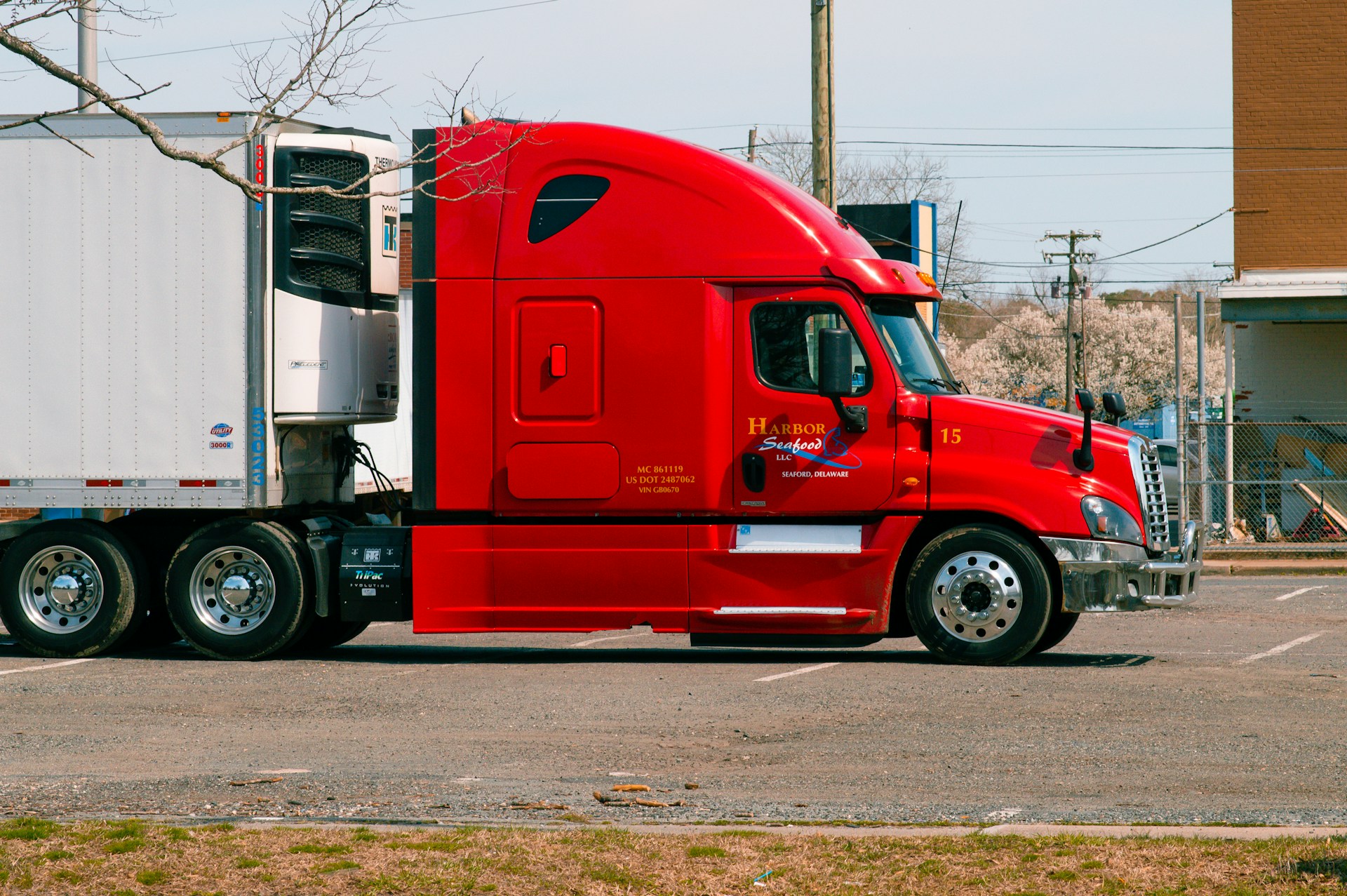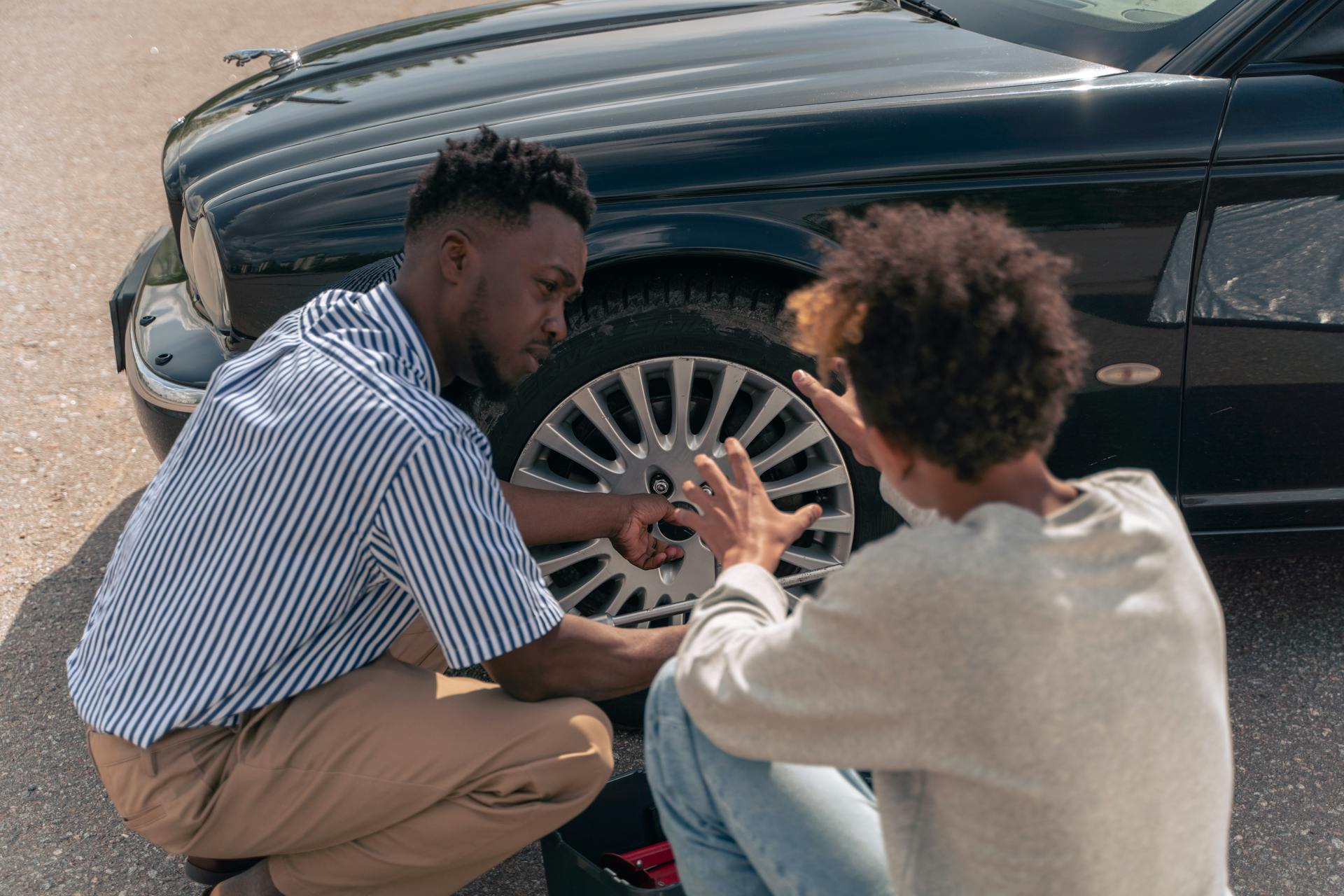A dead battery in your diesel truck can halt your plans, but jump-starting it without jump leads is possible with the right techniques. This guide provides actionable methods to revive your truck’s battery, even in tough situations. Follow these steps to get back on the road quickly and safely.
Understanding Diesel Truck Batteries
Diesel trucks often have two 12-volt batteries wired in parallel to deliver high cranking amps for starting the engine. These batteries, located under the hood, are more powerful than those in gas vehicles. Knowing this setup helps you jump-start effectively.
-
Check battery configuration: Confirm if your truck has one or two batteries, typically in parallel for a 12-volt system.
-
Locate batteries: Find them under the hood, often on opposite sides of the engine compartment.
-
Understand power needs: Diesel engines require more cranking power due to higher compression ratios.
-
Inspect for damage: Look for leaks or corrosion before attempting a jump-start to avoid hazards.
The dual-battery setup provides extra power to overcome the diesel engine’s resistance. Always consult your truck’s manual for specific battery details. This knowledge ensures you approach jump-starting correctly and safely.
Using a Portable Jump Starter
A portable jump starter is ideal for diesel trucks, offering enough power to start large engines without another vehicle. These devices are compact and user-friendly. Here’s how to use one.
-
Choose a suitable starter: Select a jump starter with at least 1500 cold cranking amps (CCA) for diesel engines.
-
Ensure it’s charged: Verify the jump starter is fully charged before use.
-
Locate the battery: Find one battery under the hood; you only need to connect to one.
-
Connect positive clamp: Attach the red clamp to the battery’s positive (+) terminal.
-
Connect negative clamp: Attach the black clamp to an unpainted metal surface on the engine block.
-
Activate the starter: Turn on the jump starter and wait 1-2 minutes.
-
Start the truck: Turn the ignition to start the engine. Retry after a few minutes if it fails.
-
Disconnect safely: Remove clamps in reverse order (negative first, then positive).
Portable jump starters, like the AMPROAD iRock40, are reliable for diesel trucks up to 10 liters. Store one in your truck for emergencies. This method is safe and effective for solo drivers.
Borrowing Power from Another Vehicle with Wires
If jump leads are unavailable, insulated wires or cables can transfer power from another vehicle’s battery. This method requires caution due to the diesel’s high power needs. Follow these steps carefully.
-
Position vehicles: Park the donor vehicle close to your truck, ensuring battery access.
-
Use insulated wires: Find wires with alligator clips or similar connectors, ideally 2-gauge or thicker.
-
Connect positive terminals: Link the positive (+) terminal of the donor battery to one of your truck’s positive terminals.
-
Connect negative terminals: Attach the negative (-) wire to the donor’s negative terminal and a metal ground on your truck’s engine.
-
Start the donor vehicle: Let it run for 3-5 minutes to transfer power.
-
Attempt to start: Turn your truck’s ignition. Wait longer and retry if it doesn’t start.
-
Disconnect wires: Remove in reverse order to avoid sparks.
-
Check connections: Ensure wires are secure to prevent electrical damage.
Using a car to jump-start a diesel truck is risky due to power differences, so use a truck if possible. If unsure, seek professional help to avoid damaging either vehicle’s electronics.
Using a Battery Charger
A battery charger can revive a diesel truck’s battery if you have access to an electrical outlet. This method is slower but effective for home or garage use. Here’s how to do it.
-
Find an outlet: Ensure you’re near a power source, like a garage outlet.
-
Select a charger: Use a charger suitable for 12-volt diesel batteries, ideally with a trickle charge option.
-
Connect to one battery: Attach the positive clamp to the positive (+) terminal and the negative clamp to the negative (-) terminal of one battery.
-
Set voltage: Adjust the charger to 12 volts, standard for most diesel trucks.
-
Charge the battery: Plug in the charger and let it run for 30-60 minutes.
-
Monitor progress: Check the charger’s indicator for charge status.
-
Start the truck: Attempt to start the engine after charging. Extend time if needed.
-
Store safely: Keep the charger in a dry place for future use.
Chargers are great for maintenance and prevent damage to the battery. Regularly test your batteries to avoid needing this method. It’s ideal when time isn’t critical.
Checking and Cleaning Battery Connections
Loose or corroded connections can mimic a dead battery. Checking and cleaning terminals can fix the issue without jump-starting. Follow these steps to restore power.
-
Locate batteries: Find both batteries under the hood and inspect terminals.
-
Check for looseness: Use a wrench to tighten any loose clamps securely.
-
Look for corrosion: Spot white, powdery buildup on terminals, indicating corrosion.
-
Clean terminals: Mix baking soda and water, scrub with a brush, rinse, and dry thoroughly.
-
Reconnect clamps: Ensure tight connections after cleaning.
-
Try starting: Turn the ignition to check if the truck starts.
-
Wear safety gear: Use gloves and goggles to protect against battery acid.
-
Maintain regularly: Inspect terminals monthly to prevent issues.
This quick fix often resolves starting problems. Keep a toolkit in your truck for easy maintenance. It’s a simple, effective solution for minor battery issues.
Using a Tow-Start for Manual Transmission Trucks
For manual transmission diesel trucks, tow-starting uses another vehicle and a tow rope to start the engine. It’s effective but requires coordination. Here’s how to do it.
-
Confirm manual transmission: Ensure your truck has a manual gearbox, as this won’t work for automatics.
-
Secure a tow rope: Use a strong, rated tow rope and attach it securely to both vehicles.
-
Set ignition: Turn the truck’s ignition to “on” and shift to neutral.
-
Coordinate towing: Signal the pulling vehicle to move slowly, reaching 5-10 mph.
-
Engage gear: Press the clutch, shift to second gear, and release the clutch quickly to start the engine.
-
Disconnect rope: Detach the tow rope carefully once the engine starts.
-
Ensure safety: Check for traffic and communicate clearly with the other driver.
-
Avoid overuse: Use this method only in safe, open areas.
Tow-starting is a last resort due to safety risks. Practice in a controlled environment and use a proper tow rope to avoid accidents.
Jump-Starting a 24-Volt System
Some heavy-duty diesel trucks use a 24-volt system with two 12-volt batteries in series. Jump-starting these requires specific steps to match voltage. Here’s how to proceed.
-
Verify voltage: Check your manual to confirm a 24-volt system (two batteries in series).
-
Use a 24-volt source: Find a donor vehicle or jump starter with a 24-volt output.
-
Position equipment: Park the donor vehicle or place the jump starter close to your truck.
-
Connect positive terminals: Attach the red clamp to the positive terminal of the first battery in the series.
-
Connect negative terminals: Attach the black clamp to a grounded metal surface on the truck’s engine block.
-
Activate power: Start the donor vehicle or turn on the jump starter for 2-3 minutes.
-
Start the truck: Attempt to start the engine. Wait longer if it doesn’t start.
-
Disconnect safely: Remove clamps in reverse order to avoid sparks.
Never use a 12-volt source for a 24-volt system, as it won’t provide enough power. Consult a professional if unsure about the system or connections.
Preventing Future Battery Issues
Preventing dead batteries reduces the need for jump-starts. Simple habits can keep your diesel truck’s batteries reliable. Adopt these practices for consistent performance.
-
Turn off electronics: Switch off lights, radio, and accessories when the engine is off.
-
Drive regularly: Take your truck for a 20-minute drive weekly to charge the batteries.
-
Test batteries: Use a voltmeter or visit a mechanic annually to check battery health.
-
Replace old batteries: Swap both batteries every 3-5 years to ensure even performance.
-
Protect from weather: Park in a garage during extreme cold or heat to preserve battery life.
-
Check for drains: Have a mechanic inspect for parasitic drains if batteries die often.
-
Keep tools handy: Store a portable jump starter or charger in your truck.
-
Monitor warning signs: Watch for slow cranking or dim lights, indicating battery issues.
Proactive maintenance prevents breakdowns. Regular checks and proper care ensure your diesel truck starts reliably every time.
Conclusion
Jump-starting a diesel truck without jump leads is achievable with portable jump starters, battery chargers, or tow-starting for manuals. Each method is safe when done correctly, even for dual-battery or 24-volt systems. Maintain your batteries and keep tools ready for emergencies.
For quick, professional help, our Jump Start Service is here to assist.







